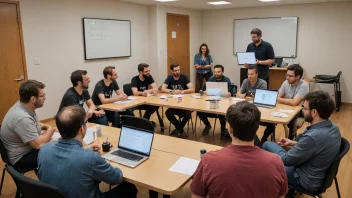Introduction
In today's rapidly evolving technological landscape, organizations are increasingly turning to artificial intelligence (AI) to optimize their cloud computing resources. This article will guide you through the essential steps of implementing AI-driven cloud optimization techniques, enhancing resource management, improving performance, and reducing costs.
Step 1: Understand Your Cloud Environment
Before implementing AI-driven techniques, it is crucial to have a comprehensive understanding of your existing cloud environment. This involves:
- Evaluating Current Infrastructure: Assess the current cloud architecture, services in use, and their performance metrics.
- Identifying Key Performance Indicators (KPIs): Determine which KPIs are critical for your cloud operations, such as uptime, latency, and resource utilization.
- Documenting Workloads: Catalog the various workloads running in your cloud environment to understand their resource demands.
Step 2: Data Collection and Analysis
Data is at the heart of AI optimization. Collecting and analyzing relevant data will enable you to make informed decisions. Follow these steps:
- Gather Historical Data: Collect historical performance data, including utilization rates, response times, and error rates.
- Monitor Real-Time Performance: Implement monitoring tools to capture real-time performance metrics.
- Use Machine Learning Tools: Utilize machine learning algorithms to analyze the collected data for patterns and anomalies.
Step 3: Implement AI Tools and Frameworks
With the data ready, it's time to implement AI tools that can help optimize your cloud environment. Consider the following:
- Choosing the Right AI Framework: Select an AI framework that suits your needs. Popular options include TensorFlow, PyTorch, and Apache Spark.
- Integrating with Cloud Services: Ensure that your AI tools integrate seamlessly with your existing cloud services.
- Utilizing AI APIs: Leverage AI APIs from cloud providers like AWS, Google Cloud, or Azure for additional capabilities.
Step 4: Develop and Train Optimization Models
Now, you need to develop AI models that will optimize your cloud resources. This step involves:
- Defining Optimization Goals: Clearly outline what you want to achieve, such as reducing costs or improving performance.
- Training Your Models: Use the data collected in the previous steps to train your AI models.
- Testing and Validating: Thoroughly test your models to ensure they work as intended and validate their accuracy.
Step 5: Implement Continuous Monitoring and Feedback Loops
Once your models are in place, it’s vital to continuously monitor their performance. This can be done through:
- Setting Up Dashboards: Create dashboards to visualize key metrics and monitor your AI models' performance in real-time.
- Implementing Feedback Mechanisms: Use feedback from users and automated systems to improve model accuracy.
- Regularly Updating Models: Continuously retrain your models with new data to adapt to changing conditions.
Summary
In this guide, we've covered the essential steps for implementing AI-driven cloud optimization techniques. By understanding your cloud environment, collecting and analyzing data, implementing AI tools, developing and training optimization models, and establishing continuous monitoring and feedback loops, you can significantly enhance your cloud operations. Remember, the key to success in cloud optimization lies in leveraging data effectively and continuously improving your AI models.






